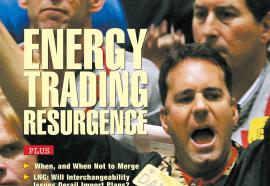The New Balance of Power
Do states have any rights in siting LNG terminals?
Natural gas often is called the world’s most perfect fuel. And since it can be transported as liquefied natural gas (LNG), and, as LNG, is projected to meet 20 percent of the country’s natural-gas requirements by 2025, the construction of onshore LNG terminals is crucial for the United States. Siting of LNG terminals is contentious as states and a range of stakeholders challenge and seek to frustrate FERC’s permitting authority.











